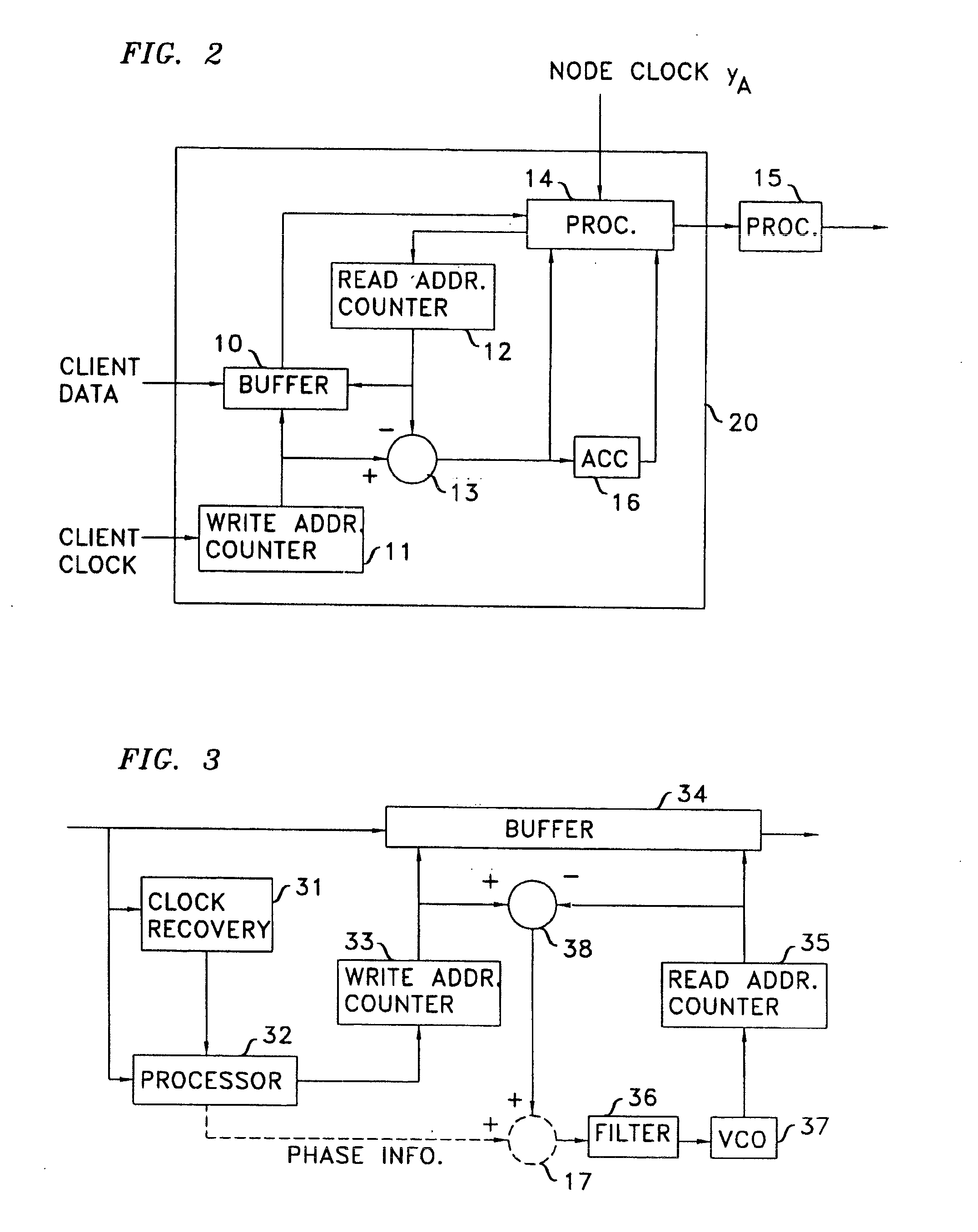Transparent sub-wavelength network
a sub-wavelength network and transparent technology, applied in the field of data transport arrangements, can solve the problems of not meeting sonet timing standards, no design exists for channelizing the digital wrapper for the many lower rate data services of a telecommunications carrier, and the inability to send an oc-3 sonet client data frame as a unit over an oc-3 sonet frame, etc., to achieve the effect of accurate client signal clock, minimize jitter and wander, and high clock fidelity
- Summary
- Abstract
- Description
- Claims
- Application Information
AI Technical Summary
Benefits of technology
Problems solved by technology
Method used
Image
Examples
Embodiment Construction
[0021]To gain an appreciation for the disclosed advance, it is beneficial to review the timing problems that arise in the SONET network in spite of the fact that all nodes in a SONET network nominally operate off a common clock. There are two specific timing problems of interest: timing impairments as a result of mapping the client signal into the SONET frame, and timing impairments resulting from SONET pointer processing. Each of these will be discussed separately.
[0022]SONET employs a layered structure, with one layer concerning itself with framing, and another with the payload being carried. As for the framing layer, a SONET STS-1 signal consists of a sequence of frames each containing 810 bytes that can be viewed as a 90 column by a 9 row arrangement, where the first three columns contain transport overhead byes. Of the 27 available header bytes, 9 bytes (the three transport overhead bytes of the first three rows) are devoted for Section Overhead, and 18 bytes are devoted for Li...
PUM
 Login to View More
Login to View More Abstract
Description
Claims
Application Information
 Login to View More
Login to View More - R&D
- Intellectual Property
- Life Sciences
- Materials
- Tech Scout
- Unparalleled Data Quality
- Higher Quality Content
- 60% Fewer Hallucinations
Browse by: Latest US Patents, China's latest patents, Technical Efficacy Thesaurus, Application Domain, Technology Topic, Popular Technical Reports.
© 2025 PatSnap. All rights reserved.Legal|Privacy policy|Modern Slavery Act Transparency Statement|Sitemap|About US| Contact US: help@patsnap.com



